
Engine factories at leading automotive companies such as BMW (plant Steyr), Volvo Cars Engine Skövde and Opel (GM Powertrain plant Vienna) have invested heavily in advanced production and transfer lines for the manufacture of all major parts of the engine; crankcase, crankshaft, cylinder head and connecting rods.
In all plants the production process is highly automated and requires that the drilling, milling and turning operations run for predictable time periods to maintain production throughput. This means also, that with existing equipment they must run at a range of operating speeds, up to 12 000 rpm, with a minimum of unplanned stoppages. For some, new machines will run from 16 000 rpm up to 24 000 rpm max.
Many manufacturing processes with high degrees of automation suffer from a certain percentage of unplanned stoppages due to some form of component wear or failure. In the case of automotive engine manufacture, one recurring cause of unplanned stops was from bearing damage in the machine tool spindles. Such damage developed after many hours of operation. Existing measuring and monitoring techniques were giving some means of containing unplanned stops, but the automakers wanted to apply the best technology to enhance their production rates and at the same time give them greater insight into the cause and solution of such breakdowns.
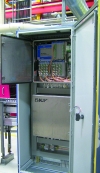
Most auto manufacturers had used off-line measuring before and although it gave some benefit, there were still many things that they could not track as much as they wanted to, and unplanned stoppages due to bearing failures still occurred, independent of the bearing supplier. One engineering manager put it like this: "What was wanted was the latest, proven, technology that would solve the current problems and provide a basis for managing the higher speeds that were expected in the future."
SKF was well known to them as being one of the bearing suppliers to the machine builders of their machine tool spindles and supplying bearings to some of their car models.
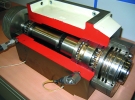
Enthusiasm and success
SKF's team of condition monitoring engineers made presentations and arranged a visit to an existing installation in an automotive manufacturing plant where they could study the SKF system and discuss its performance with the local plant engineers.
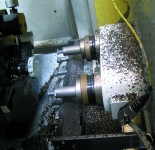
SKF's condition monitoring system
The basic components of the SKF on-line system are:
* Vibration sensor(s) to be fitted close to the bearings on the machine tool spindles to be monitored.
* Multilog local monitoring units (LMU) to receive the vibration signals from the installed sensors, convert it into spectra (FFT) and deliver this data to locally placed standard PCs for further storage and analysis by SKF software.
* SKF's Prism4 or Machine Analyst software to store, analyse and display vibration spectra and other performance data.
* Off-line measurements can be made using SKF Microlog systems. Data from SKF Micrologs can be downloaded into Prism4 or Machine Analyst.
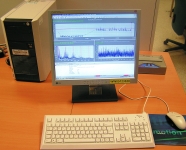
One of the pilot installations
The pilot installation at one of the plants consisted of two LMUs; one in a cylinder head production line and one in a crankshaft housing production line. In total there were about 50 sensors installed on about 25 spindles. SKF Prism4 was the analysis software used. The goals of the pilot test were:
* To determine how early in advance bearing damage could be detected.
* To use the system for predictive condition-based maintenance, instead of a time-based or run to failure schedule, so that focused maintenance could be planned in advance.
* Reduce the number of unplanned stoppages due to bearing failure or other machine induced failure (spindle unbalance, misalignment, resonance).
* Develop an understanding of the system and to build overall system know-how.
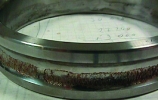
The installation of the system network was a joint action between SKF, the automakers maintenance teams and local sub-suppliers. This was necessary to set up the logic gating signals to the LMUs so that measurements could be made at opportune times during the manufacturing process in spindle idle modes, and to get a quick and smooth installation of all the cabling within the existing cabling structure.
From applications in many industrial applications the SKF engineers had learned that as well as selecting the correct type of sensor, the location of the sensors is also critical to getting good data. And the location depended on the spindle design, the machine construction, the spindle speed and the distance from sensor to LMU. Making and fixing special thread adaptors to allow quick and easy connection of the sensors on some difficult-to-reach spindle locations achieved this.

A continuing development
The latest SKF on-line monitoring system uses a new improved condition monitoring unit; the 'CMU' and a new online version of SKF Machine Analyst software.
Further experience with the system is allowing correlation of spindle vibration level and machining quality level. This is expected to generate operational improvements such as increased production yield and higher throughput.
If such systems are implemented in new factories the automakers will have trend and spectra from their machine tools and spindles starting from a really new condition. This allows follow up of the trend and spectra development during manufacturing much better than starting in a production line, where the spindles have been in operation already for years before.
Additionally, by use of off-line SKF-FFT-Data collectors, automakers will be able to check the spindle-repair-service from external and internal workshops against the desired spectra, before the spindles are mounted again into the machine tools. This means that production will be continued with fully compliant spindles that will ensure the continuing high quality of components and engines.
For more information contact Colin Roberts, SKF SA, +27 (0) 11 821 3500, [email protected]
| Tel: | +27 11 821 3500 |
| Email: | [email protected] |
| www: | www.skf.co.za |
| Articles: | More information and articles about SKF South Africa |

© Technews Publishing (Pty) Ltd | All Rights Reserved